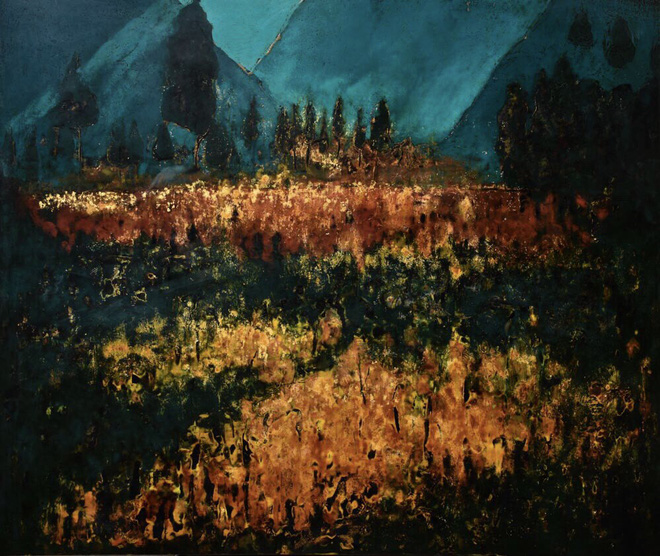Once chiefly employed in the decoration of wooden objects, ‘son mai,’ or lacquer painting, has grown over the last century into a freestanding art form in Vietnam, to a point where it is now widely considered to be the country’s national painting technique.
The traditional Vietnamese lacquer used in son mai is made by mixing the resin from a Japanese wax tree with natural pigments to create different colored paints.
“Resin from the Japanese wax tree was initially used by ancient Vietnamese as a solvent for coatings on wooden decorations,” said Nguyen Thanh Binh, a lacquer painter.
“The French were the first to discover characteristics of the resin that are similar to those of flaxseed oil, which is a common carrier used in oil paint.”
 |
It was in the 1920s that son mai became prominently recognized as a form of art in Vietnam through artwork by the ‘father of Vietnamese lacquer painting’ Nguyen Gia Tri, who studied at the Hanoi College of Fine Arts, and his French professor Joseph Inguimberty.
The final finish of paintings done with traditional Vietnamese lacquer is never predictable, as surprising outcomes can be achieved that are outside of an artist’s control.
“There are effects that cannot be captured in photos and must be contemplated in person,” Binh said.
“The enigmatic and magical beauty of traditional lacquer has charmed generations of artists and enthralled art lovers around the world.”
However, not all artists have the patience and passion to go through an arduous process of finishing a son mai painting from scratch using traditional lacquer.
 |
Tremendous challenges
Traditional Vietnamese lacquer requires a humidity level of 80 percent to set, making working with it a pain for artists living in central and northern Vietnam, where dry winters make it almost impossible to create lacquer artwork.
“Dry air dulls the colors and makes the surface of a lacquer painting dry faster than the layers underneath, which ruins the work,” said lacquer artist Le Cu Thuan.
Some artists have to cope with the problem by building special ‘incubation’ rooms, where humidity can be controlled to facilitate year-round work with lacquer.
 |
“A son mai painting can take months to finish, depending on the technique employed and the number of lacquer layers,” Thuan said.
Painters who devote themselves to making son mai art often suffer from skin conditions such as irritation, allergic reactions and ulcers due to the toxicity of traditional Vietnamese lacquer.
“I can’t count the times I’ve wound up with a swollen face from coming in contact with lacquer,” said Le Anh Can, a son mai painter based in the central city of Hue.
At one time, Can was hospitalized for a whole month for the treatment of swollen skin while painting with lacquer.
 |
Many artists have given up their pursuit of lacquer arts due to this setback, while others opt for industrially manufactured lacquer to avoid the adverse health effects associated with traditional lacquer.
“The symptoms get worse in dry weather, especially when you stay in air-conditioned rooms,” said lacquer artist Nguyen Hien, who recently published a photo book compiling her life works with son mai.
“But what am I to do? It’s passion.”
 |
 |
 |
Like us on Facebook or follow us on Twitter to get the latest news about Vietnam!
















































